It is possible that the most life-negating aspect of modern landscapes is the whole idea of landscape maintenance. Landscape maintenance implies — no, insists — that landscapes must be maintained as originally designed, whatever the costs and losses.
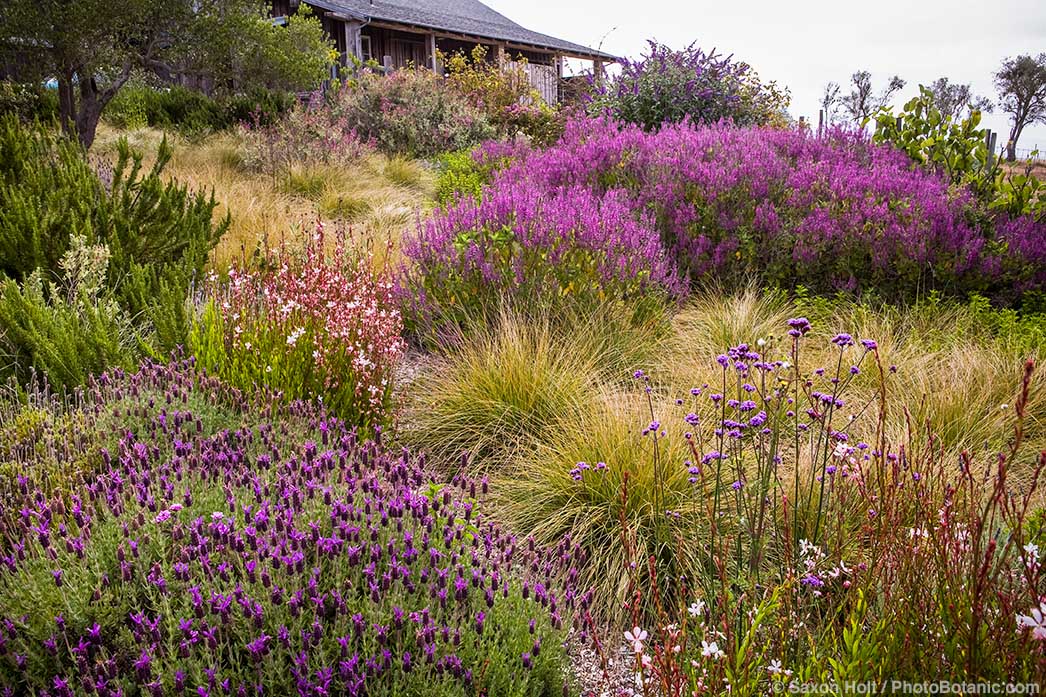
A lightly maintained meadow garden in California
In the service of what is called maintenance, most residential front yards and almost all commercial landscapes are forced into compliance, preserving the outlines of their original design but with virtually no sign of life. Shrubs considered too large or wrongly shaped are brutally distorted. Weeds and “bugs” are sprayed with pesticides. Soil, whatever its condition when first planted, is blown until nothing resembling garden soil remains. In one of the more transparent expressions of the human urge to control, all natural change in the landscape is denied.
There is just no downside to stepping back from the maintenance trap and allowing a little wildness. Stopping the pesticides brings back the pollinators as well as the microbes on which healthy soil depends. Healthy soil means that plants properly selected and placed need less water and little or no fertilizer to thrive. Stopping the fertilizers can help to restore populations of soil microorganisms that both feed the plants and help them to resist pests and disease.
Relinquishing control does not mean abdication. Gardens are designed and managed in large part to serve the needs of those who make and live with them. Left to their own devices, plants may so alter the garden design that the needs of people are no longer met. The gardener may step in at such times to restore the original design or may decide that the new arrangement is acceptable or even preferred. Gardeners change too. Needs change. Tastes change. Knowledge and experience grow. A garden that does not change with the gardener will lose the ability to delight and surprise.
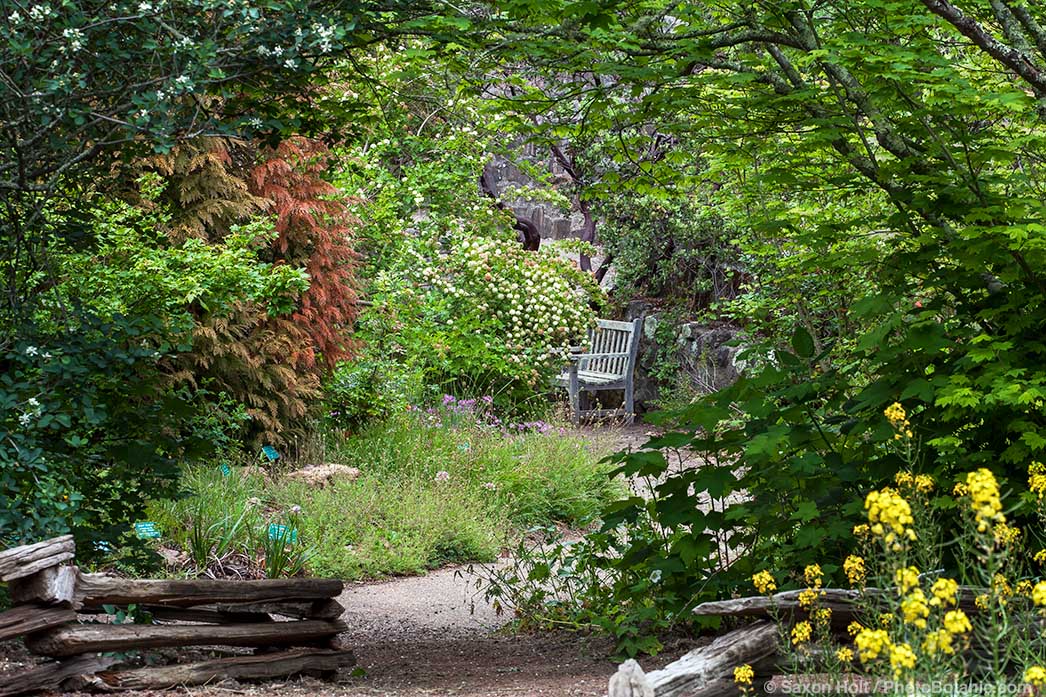
California native plant garden in Regional Parks Botanic Garden, Berkeley
Welcoming a little wildness can start small, in a portion of the garden, perhaps farthest from the house, where flowers are allowed to go to seed. Here fallen leaves remain on the ground to wither and decompose, at least until spring. Some plants formerly known as weeds are encouraged to audition for a role. As you watch from a bench or hammock, it is obvious that this part of the garden is favored by birds and bees and butterflies.
We can choose to make gardens that respect the natural world, that take little from the earth that is not returned, that welcome and accommodate the presence of wildlife, that support and nourish the life of the soil. At this critical stage of planet Earth, we are moving beyond the tenets of “live lightly” and “do no harm” to a more potent philosophy requiring positive contributions to the environment on which we depend for life itself. Will gardeners and garden designers rise to the challenge? At times it seems likely that we will.
(Excerpted from Gardening in Summer-Dry Climates)


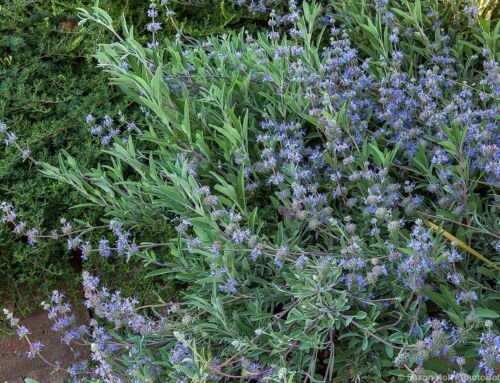
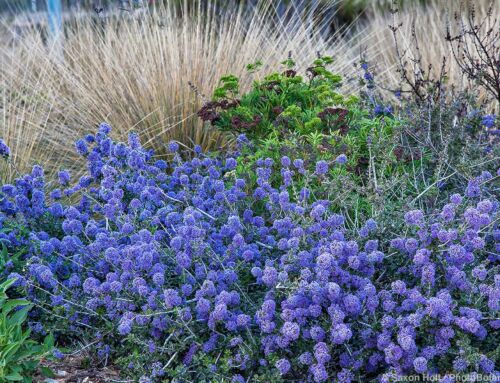
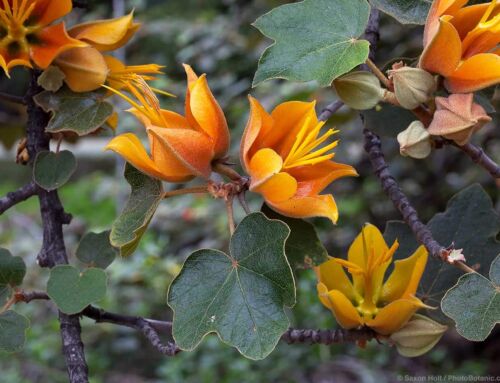
Leave A Comment